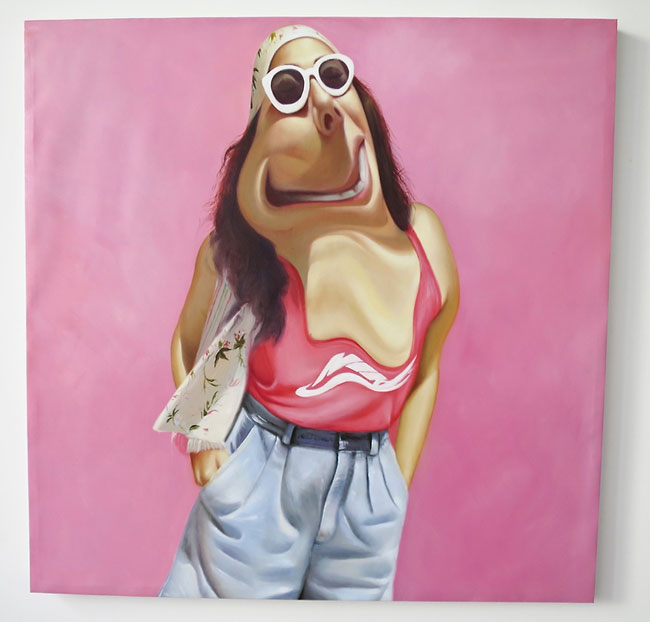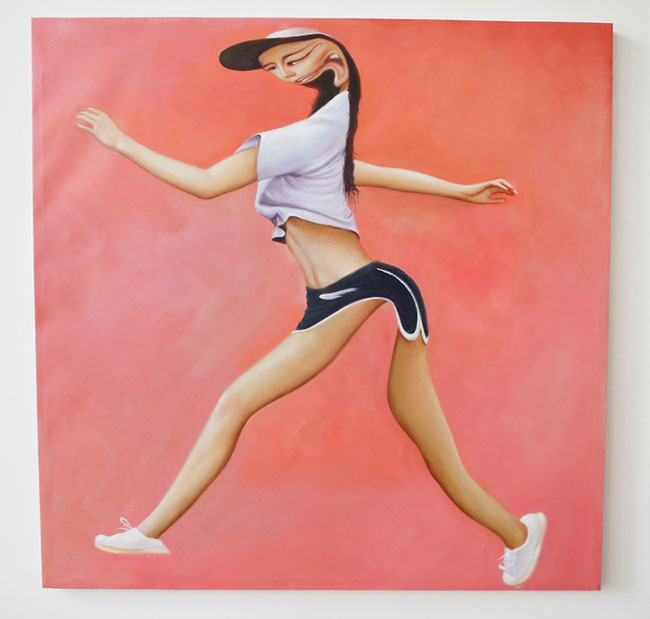

As mentioned in an earlier post, these paintings come out of a larger project of Ryder Ripps', where he is critiquing a fashion model's Instagram account: it's all explained step by step on this Tumblr he created for the project, titled On Ho.
Let's jettison all the anti-Instagram backstory -- I know many folks who adore Instagram but Ripps didn't have to convince me that it sucked -- and just look at the above as jpeg-painting-things.
First, you have the self-posted photos of the fashion model Ripps keyed in on. Her name is Adrianne Ho and she makes money posing for various brands. So you have whatever decisions she made for the poses, angles, cropping, background, etc. Then, you have whatever Instagram is adding -- "arty" filters that soften contours, tweak colors, and play with the lighting. Ho's work looks completely professional by the time she and the Instagram algorithms are through.
Then, you have Ripps' alterations using a multi-touch interface on a smartphone. This is pretty conventional Photoshop-style dragging and smearing to create funhouse-mirror distortions. (Ripps compares his efforts to Bacon and De Kooning but that's just hubristic retcon -- retroactive continuity -- as almost anything can be compared to a Famous Modern Master.)
Ripps' digital reworkings are then given to a painter-on-canvas: Ripps says he hired "Jeff Koons' assistants" but I'm guessing it was one of those mainland China shops that will render any image as an oil painting.
Then, the paintings are photographed and posted as web-friendly jpegs. Ripps says he got many likes for these painted images.
It's this final stage, what you see above, that's the most intriguing. George Condo meets James Rosenquist, with Instagram ephemera as subject matter. Rosenquist worked as a sign painter, so he was essentially using himself as one of those Chinese painters-for-hire, putting art quotes around his own manual technique. Instead of billboards as Pop Art subject matter, it's Instagram. The fast, easy distortions of the multitouch, where algorithms make many decisions regarding what is to be smeared and how (responding to the minimal input from human gestures) leave pockets of digital blur and mush. The painters-on-canvas must then make additional decisions of how to render the distortions for maximum polish and closure. Then the painting is lit and photographed. Thus, a sequence of banal techniques leads to a satisfyingly surreal result.
Addendum: One issue not covered is the scale of the painting/jpeg/things. I like them at 650 pixels wide and wouldn't much care about seeing them this big (link to show scale, recoiling slightly at the dumbass high fives Ripps is getting from the Facebook/Instagram net art community -- how about upping the quality of the discourse just a hair). See more on artisanal photorealism.
